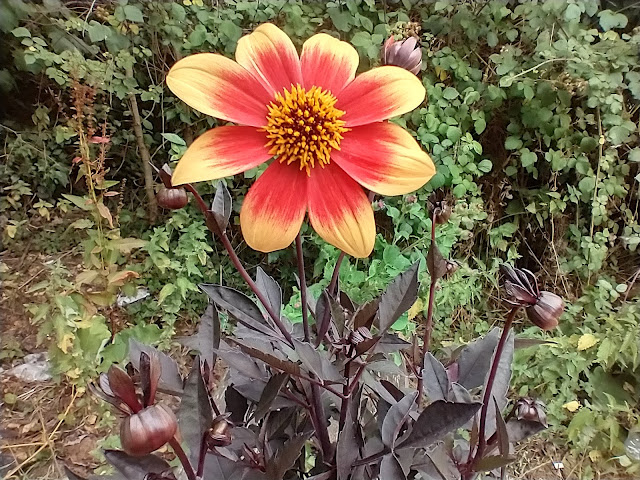Book Review: Kitchen Garden Estate
 |
| Part of the glasshouses at Tyntesfield last year. The whole of the kitchen garden area there is being restored back to its former glory. |
I have dreams of having a walled kitchen garden and a vast orchard, but the reality of life means my ownership of such is a few fruit trees on my allotment and garden, plus regular visits to National Trust properties, or the likes of West Dean in Sussex to get my fix. I now possess another way of visiting; a rather nice way of doing it in the comfort of my own home.
Kitchen Garden Estate documents life on the country estates looked after by the National Trust. The introduction briefly traces the development of estate management over the centuries, and how the Trust now sees their role for educational purposes, their restaurant/cafe supplies and wider community involvement.
The bulk of the book is devoted to highlighting the produce an owner would expect from their country estate. This is much wider than what initially springs to mind. Not only are the usual fruit and vegetables; herbs and flowers; orchards and bees explored, the wider estate and its provisioning in the form of dairy and other farm production; game; fish (in the form of fish ponds and lakes); fowl (poultry and dovecotes), plus hops and vineyards are included. These form the book's main chapters.
Each section documents the full range of produce which an estate might be expected to provide. These are richly illustrated with historical documents and pictures; photographs; and stories of how individual foods reached our shores or those associated with particular estates managed by the Trust.
There are also plenty of recipes for you to try. Some of these are today's fare found in the Trust's cafes and restaurants which you may have sampled already, like the well-known Apple Scones at Erdigg. Others have an older flavour and origin, such as the recipe for Woodcock Soup taken from Lady Wentworth's recipe book (from around 1730) found at Dunham Massey.
Kitchen Garden Estate is described on the back cover as both an inspirational and practical guide. If you're looking for a full how-to manual for your allotment or small holding, this probably isn't what you're looking for. However, if you want a fascinating glimpse into the history of estate management at some of our most famous country houses, which is richly illustrated and contains techniques and recipes you'd like to try at home, then this is the book for you.
Note: if you like the look of this book, it's worth seeking it out in the National Trust's shops. It's often on offer at £15, which is cheaper than what's found on Amazon at the moment. It may also have a different front cover to the one I've shown from my copy.
Disclosure: Not only did I receive a review copy of the book for independent review, I also sat next to the author when she started her job at The National Trust HQ in Swindon in 2007. I was volunteering there one day a week and I remember passing across snippets I'd found in the archives - which I was cataloguing - re walled kitchen gardens, orchards etc. as this was the main focus of her research at the time.











I want that greenhouse. I want an estate. What a day-dreaming book to be sure.
ReplyDeleteOh,yes. This book is on the wish list!
ReplyDeleteOh will keep my eyes open for this book VP, as well as a closer eye on the menu next time we visit Erdigg or Dunham Massey which are both quite near :)
ReplyDeleteEsther - I want that greenhouse too. I love all the hooks in the wall made from years of putting up wires to support all the produce. It's seeing the place's history right in front of your eyes.
ReplyDeletePetoskystone - I think you'll like it. I hope you can find it on your side of the pond.
Anna - there's lots of NT places mentioned in the book which are close to me as well as to you in Cheshire. I'm particularly pleased to see the tiles from the dairy at Dyrham Park :)
Thanks for the lovely review. It sounds like a marvelous book! :)
ReplyDeleteFarmgirl Susan - welcome! I enjoyed it a lot, especially as I've been to a number of the places included in the book.
ReplyDelete